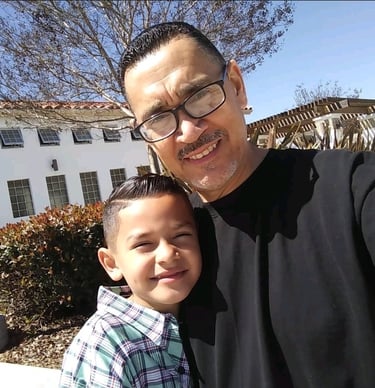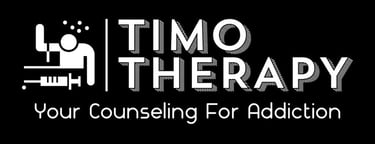Are Drug Courts a Solution or a Trap for People Struggling with Addiction?
Investigate the effectiveness of drug courts as an alternative to incarceration. Do they offer a path to recovery, or do they unfairly criminalize addiction and set people up for failure?
LEGAL & SOCIAL ISSUESTRENDING & CONTROVERSIAL TOPICS


Understanding Drug Courts
Drug courts are specialized judicial programs aimed at addressing substance use disorders among offenders through a therapeutic approach, rather than relying solely on traditional punitive measures. Established in the mid-1980s in response to the growing crisis of drug-related criminal behavior, drug courts employ the model of therapeutic justice to provide support and treatment for individuals struggling with addiction. This approach integrates judicial supervision with rehabilitation services, intended to reduce recidivism and promote recovery.
Typically, drug courts serve adults and juveniles who have been charged with non-violent drug offenses. Participants often come from diverse backgrounds, reflecting various socioeconomic statuses, ethnicities, and ages. The underlying principle of these courts is the recognition that addiction can be a significant factor in criminal behavior. By addressing the root cause of the offense, drug courts aim to facilitate long-term recovery rather than merely addressing the consequences of criminal actions.
The drug court process generally involves multiple stages, beginning with a thorough assessment of the individual's needs and characteristics. Upon entering the program, participants engage in regular court appearances and attend substance use treatment and rehabilitation programs. The structure typically combines accountability through regular drug testing and compliance requirements with supportive interventions. Successful completion of the program can lead to reduced sentencing, dismissals of charges, or alternative sentencing options, thus presenting a promising alternative to conventional incarceration.
Within the broader criminal justice framework, drug courts highlight the importance of integrating addiction treatment with judicial accountability. They promote greater collaboration between legal systems and healthcare providers, ultimately striving to create pathways toward recovery for individuals ensnared in cycles of addiction and criminal behavior.
Effectiveness of Drug Courts: Success Rates and Outcomes
Drug courts have garnered attention as a potential solution for those grappling with addiction. These specialized courts aim to reduce recidivism while promoting recovery through an integrated approach that combines treatment and judicial oversight. According to various studies, drug courts have reported positive outcomes, with some indicating that participants demonstrate a lower rate of recidivism compared to those in traditional correctional systems. Research has shown that drug court participants may exhibit a 10-20% reduction in reoffending rates, signifying a notable shift towards rehabilitation over punishment.
Success in drug courts is often defined by various metrics, including completion of treatment programs, sustained sobriety, and avoidance of re-arrest. These success indicators are crucial for evaluating the effectiveness of drug court interventions. Reports suggest that approximately 40-60% of participants successfully complete their treatment programs, markedly higher than the rates of rehabilitation from conventional incarceration. It is essential to recognize that what constitutes "success" can vary among individuals, with many weighing personal progress over statistical measures.
The effectiveness of drug courts is influenced by a multitude of factors, such as the accessibility of treatment options, the robustness of support systems available to participants, and intrinsic attributes related to the individual’s addiction journey. Factors like motivation for recovery, social support networks, and mental health status significantly contribute to outcomes. Additionally, the comprehensiveness of the drug court model, which can include tailored rehabilitation programs and ongoing case management, is key to fostering success among participants.
In light of these findings, while drug courts present an innovative approach to addressing addiction, the nuances of individual circumstances must inform the conversation about their efficacy as a resolution to substance use issues. Continued examination of data surrounding drug court outcomes will be crucial to understanding their long-term impact in the realm of addiction treatment.
Criticism and Challenges of Drug Courts
Drug courts, designed to facilitate rehabilitation rather than punishment for individuals struggling with substance use disorders, face considerable criticism that raises questions about their efficacy. One of the primary concerns is that these courts may inadvertently criminalize addiction rather than promote genuine recovery. Critics argue that by imposing strict requirements and monitoring, drug courts can create an environment in which individuals are treated as offenders instead of patients. This shift in perspective can undermine the potential for effective treatment and recovery, ultimately perpetuating cycles of addiction.
Another significant issue revolves around the punitive measures that some drug courts employ. When participants fail to comply with the conditions set forth by these courts—such as abstaining from drugs or attending mandated counseling sessions—they may face jail time as a consequence. This emphasis on punishment can have detrimental effects on an individual's recovery journey, as the threat of incarceration may deter individuals from seeking help or being honest about their struggles with addiction. Rather than fostering a supportive environment conducive to healing, punitive actions can exacerbate feelings of shame and isolation.
Systemic inequalities present additional challenges within drug court systems. Access to treatment and support services can vary dramatically based on geographical location and socioeconomic status, leading to disparities in outcomes for individuals involved in these courts. In some regions, resources may be scarce, resulting in inadequate treatment options for participants. This inconsistency can disproportionately affect marginalized populations, perpetuating existing inequalities in the justice system and healthcare access. As drug courts continue to evolve, addressing these criticisms and challenges is essential to ensure they can effectively balance accountability with compassion for those grappling with addiction.
Conclusion: Are Drug Courts a Path to Recovery or an Endless Cycle of Punishment?
The examination of drug courts reveals a complex interplay between facilitating recovery and potentially entrapment for individuals grappling with addiction. While drug courts are designed to offer an alternative to incarceration, emphasizing rehabilitation over punishment, their effectiveness ultimately hinges on several factors including program structure, participant support, and the nature of addiction itself. Many participants have experienced significant positive outcomes, such as reduced recidivism and improved health markers, which support the argument that drug courts can indeed serve as a viable path to recovery.
However, criticism persists regarding the coercive aspects of drug courts. The pressure to comply with stringent requirements can lead to a cycle where individuals feel trapped within the very system that is supposed to help them. Mandatory drug testing and punishment for relapse might inadvertently discourage honest engagement in recovery processes, thereby creating a paradox of penalizing setbacks instead of fostering resilience. This duality illustrates the urgent need for ongoing research to understand the nuances of drug court dynamics and to identify best practices that truly resonate with the needs of all participants.
As policymakers and practitioners evaluate the role of drug courts, it is crucial to prioritize comprehensive reforms that promote individual-centered approaches. Incorporating evidence-based practices and enhancing support networks, including access to mental health services and social reintegration programs, can significantly improve outcomes for those involved. By learning from successful models and integrating feedback from participants, drug courts can evolve into more effective systems that not only enhance recovery trajectories but also mitigate the risks of entrapment within punitive frameworks. The quest for aligned reforms continues, ensuring that drug courts can genuinely serve as a beacon of hope rather than a mere revolving door for individuals facing the challenges of addiction.




















